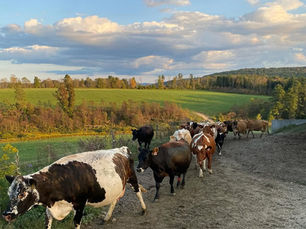5 Things To Look For In The Dairy Aisle
- Maple Hill Creamery
- May 17, 2017
- 1 min read
Updated: May 9, 2021
Do you imagine idyllic pastures with grass-munching cows when you grab a gallon of milk? Most consumers do. Organic consumers are even more likely to expect that image – they paid a premium for it after all, right? But, as an article published by the Washington Post last week points out – what consumers expect from organic, they aren’t necessarily getting. For large-scale organic dairy production, there are more similarities to big conventional brands than to small-scale non-certified ones.

So, what are the most important things to look for when buying dairy if the USDA organic label doesn’t tell the whole story?
Is there a USDA Certified Organic label on the product?
Does it claim to be grass-fed? If so, is it 3rd party-certified 100% grass-fed?
Is the brand transparent about their milk source? Do they really know the source farms, and the size of the herds?
Does this brand source from farms using grazing practices that enrich and nourish the soil?
Does the brand’s ingredient list contain lots of additives or high amounts of sugar?
We suggest looking for all the above properties in your dairy products, but keep in mind that the more boxes you can check off these guidelines, the more likely your dairy was produced the way you’d expect it to be: small scale, family-owned, cows on grass, and practices that are sustainable or regenerative.









